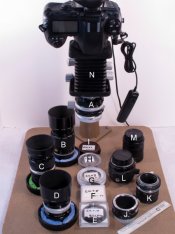alanrockwood
Member
- Joined
- Oct 11, 2006
- Messages
- 2,186
- Format
- Multi Format
I am interested in learning more about the technical quality of photos made with close up lenses. To get one issue out of the way, I do understand that achromatic doublets provide the best optical quality, so let's focus on simple single element diopter lenses.
It is often stated that quality suffers when using simple closeup lenses. Sometimes the additional comment is appended: "unless stopped down". However, I am having a hard time finding any test results to confirm these comments.
Also, the comments about stopping the lens down when using closeup filters seems superfluous to me, since one almost always stops down when doing close ups anyway in order to gain depth of field.
Any comments?
It is often stated that quality suffers when using simple closeup lenses. Sometimes the additional comment is appended: "unless stopped down". However, I am having a hard time finding any test results to confirm these comments.
Also, the comments about stopping the lens down when using closeup filters seems superfluous to me, since one almost always stops down when doing close ups anyway in order to gain depth of field.
Any comments?












